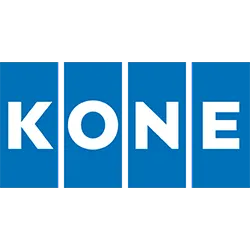Overview
This 45-day AML/KYC course is designed to equip fresh graduates, IT professionals seeking a domain switch, and finance professionals with job-ready skills in anti-money laundering compliance and Know Your Customer processes. Unlike certification-oriented programs, this course focuses on practical skills that mirror the day-to-day work of AML/KYC analysts – from conducting customer due diligence to monitoring transactions and reporting suspicious activity. Similar intensive programs (e.g. a 45-day AML-KYC training by Imarticus Learning) have proven effective in preparing learners for roles in banks and financial institutions. Key learning outcomes include:
-
Foundations of Money Laundering: Understand what money laundering and terrorist financing are, why they pose a risk to the financial system, and learn the classic three stages of laundering (placement, layering, integration) with real examples. Grasp the basics of Combating the Financing of Terrorism (CFT) and how AML efforts relate to preventing terrorism financing.
-
AML Laws & Standards: Become familiar with global AML standards (e.g. the FATF 40 Recommendations) and major regulations in various jurisdictions. Understand the roles of regulators and international bodies (such as central banks, FIUs, FATF, Interpol) in enforcing AML/CFT laws.
-
Customer Due Diligence (KYC/CDD): Learn the full KYC process for onboarding clients – verifying customer identities (individual KYC vs. business KYB), collecting and verifying documents/data, and risk-rating customers. Conduct effective Customer Due Diligence (CDD) and Enhanced Due Diligence (EDD)for high-risk customers, including identifying Ultimate Beneficial Owners (UBOs) of companies.
-
Screening and Monitoring: Gain hands-on experience with AML compliance tools and techniques. This includes conducting sanctions and watchlist screening (e.g. OFAC/UN/EU lists), identifying Politically Exposed Persons (PEPs), and performing adverse media checks on customers. Recognize common red flags in customer behavior or transactions and practice transaction monitoring to spot suspicious patterns. Learn how to investigate alerts and escalate or file Suspicious Activity Reports (SARs) as required.
-
AML Operations & Program Management: Understand how AML compliance is implemented within organizations. Learn the key components of an AML compliance program – internal policies/procedures, controls, record-keeping, training, and independent audit. Know the role of the Money Laundering Reporting Officer (MLRO)/compliance officer in managing risk and ensuring compliance. Explore how a risk-based approach is applied in allocating AML resources and customer scrutiny.
-
Technology and Tools: Explore the growing role of technology in AML. Get introduced to transaction monitoring software, e-KYC solutions, and RegTech tools used for ID verification (OCR, biometric checks, liveness detection) and name screening (e.g. World-Check, LexisNexis). Understand emerging trends like the use of AI/machine learning to detect fraud and suspicious transactions.
-
Practical Skills and Case Studies: Throughout the course, students will work on real-world case studies to simulate the job of an AML/KYC analyst. By analyzing scenarios of suspicious transactions or complex customer profiles, learners will apply regulations and tools in practice. They will also build skills in writing case narratives or reports (e.g. drafting a sample SAR). Quizzes at the end of each module reinforce key concepts and ensure understanding.
-
Career Preparation: The curriculum is structured to enhance employability. In addition to technical knowledge, learners will receive guidance in résumé building for compliance roles and practice common interview questions for AML/KYC analyst positions. The goal is to make participants confident and “job-ready”– a philosophy echoed by training academies that offer placement-focused AML courses.
By the end of this program, students will have a comprehensive understanding of AML/KYC principles and the practical know-how to carry out customer due diligence and anti-money laundering investigations, closely mirroring the responsibilities of an entry-level compliance analyst. The next section provides a week-by-week breakdown of the curriculum structure and contents.
Overview of the 45-day AML/KYC course structure, broken into weekly modules covering fundamentals, industry practices, regulations, customer due diligence, and compliance program implementation (source: Brolly Academy AML training roadmap
Course Highlights
-
Job-Oriented Curriculum – Mimics actual analyst work, not just theory
-
Hands-On Training – Practical KYC documentation checks, sanctions screening, SAR drafting
-
Case Studies – Realistic AML/KYC scenarios from banking & fintech sectors
-
Capstone Project – End-to-end investigation & reporting simulation
-
Quizzes & Assignments – Reinforce learning and test job-readiness
-
Placement Preparation – Resume building, mock interviews, 100+ interview questions for AML/KYC roles
Course Details
Duration: 45 days (approx. 6 weeks). The course is divided into 6 modules (weekly units), each focusing on a core competency area. It follows an online academy-style format (similar to Coursera specializations) with a blend of video lessons, readings, and interactive components each week. Learners can expect about 8–10 hours of study per week, including content and exercises.
Weekly Structure: Each week introduces new topics through lectures and examples, followed by a quiz to test comprehension. Learners also engage in hands-on activities – for example, case study analyses, role-playing exercises, or project work – to apply concepts in realistic scenarios. These practical components ensure that students can connect theory to what an AML/KYC analyst does on the job.
Assessment: There will be short quizzes at the end of each module (weeks 1–5) and a more comprehensive final assessment in week 6. The final assessment includes analyzing a detailed AML case study (covering customer onboarding and transaction monitoring for a fictitious company) and producing a report or recommendation, mimicking an analyst’s task. Students will also receive feedback on their case study work.
Support and Resources: Throughout the course, discussion forums or live doubt-clearing sessions are available to help learners. Additional resources like regulatory guides, sample KYC documents, templates for risk assessment, and a glossary of AML terms are provided.
Career Prep: In the final week, a workshop on career preparation is included – covering tips for interviews, commonly asked technical questions (e.g. “How would you handle X scenario?”), and guidance on showcasing AML/KYC skills to employers. By structuring the course this way, the curriculum not only imparts knowledge but also builds confidence through practice and professional development.
Detailed Curriculum Outline (45 Days)
Below is a detailed week-by-week breakdown of the curriculum, including the topics covered, learning activities, and assessments:
Week 1: Introduction to Anti-Money Laundering Fundamentals
Topics Covered:
-
What is Money Laundering? Definition of money laundering and its impact on the global economy. Real-world examples of financial crimes and how illicit money is “washed” through financial systems. Introduction to terrorist financing and the link between AML and CFT (Combating the Financing of Terrorism).
-
Stages of Money Laundering: In-depth study of the three classic stages – Placement, Layering, Integration – with scenarios illustrating each stage. For example, following a case of drug trafficking proceeds: from cash placement into the banking system, through complex layering transactions, to final integration into seemingly legitimate assets.
-
Key Terminology: Explanation of fundamental terms such as predicate offenses (the underlying crimes generating dirty money), beneficial owner, shell companies, etc. Students learn the vocabulary that will be used throughout the course and in AML practice.
-
Financial System Vulnerabilities: Discussion on why banks and financial institutions are vulnerable to laundering, and the consequences of AML failures (including real case briefs like HSBC’s 2012 fines, etc., to underscore the importance of AML compliance).
-
Global Impact: Overview of how money laundering affects economies and societies, and why international cooperation is needed to fight financial crime. Briefly introduce bodies like the United Nations Office on Drugs and Crime (UNODC) statistics on money laundering, to give scale of the issue.
Activities & Assessment:
-
Case Study Discussion: Learners are given a simple case (e.g. an individual depositing large sums in structured amounts) and asked to identify which stage of money laundering is occurring and why it’s suspicious. This is done as a forum discussion or live session to apply the stage concepts.
-
Quiz 1: A 10-question quiz on Week 1 topics, testing definitions (e.g. identifying a stage of laundering from a scenario, recognizing terms). For instance: “Which stage of money laundering is characterized by breaking down a large sum into smaller deposits across various accounts?” (Correct answer: Placement via smurfing). The quiz ensures understanding of foundational concepts before moving forward.
Week 2: AML Risks, Typologies, and Red Flags
Topics Covered:
-
Risk Factors in Money Laundering: Explore the different dimensions of AML risk – customer risk, geographic risk, product/service risk, sector risk. Students learn how certain customer profiles (e.g. offshore companies, cash-intensive businesses) or certain countries (with weak AML laws or known corruption issues) pose higher risks. Introduction to the risk-based approach (RBA): allocating compliance resources commensurate with risk levels, a concept reinforced by regulators worldwide.
-
Common Money Laundering Typologies: Study of known methods criminals use to launder money. This includes techniques like structuring/smurfing (breaking transactions into smaller amounts), use of shell companies and complex corporate structures, trade-based money laundering (mis-invoicing trade shipments), round-tripping, and more. Each typology is illustrated with an example case. Emerging typologies are also covered: for instance, misuse of cryptocurrencies and virtual assets, online gambling for laundering, and cybercrime schemes that funnel illegal proceeds.
-
Red Flags and Indicators: Learn to recognize red flags associated with different typologies and risks. For example, multiple cash deposits just under reporting thresholds, clients who are reluctant to provide information, transactions that don’t match a customer’s profile, sudden activity in dormant accounts, etc. Regulators and organizations like FATF and local FIUs often publish lists of red flag indicators – these are reviewed and discussed.
-
Real-World Cases: Examination of a few real money laundering cases (e.g. the “Panama Papers” scandal for shell companies, a trade-based laundering case, or a local bank fined for not detecting structuring). Learners identify which typologies were used and what red flags, in hindsight, appeared in those cases.
Activities & Assessment:
-
Typology Research Exercise: Students are divided into small groups (or breakout discussion threads). Each group is assigned a specific typology (e.g. trade-based laundering or use of real estate) and must research an example of that method being used in real life. They then share a brief summary with the class on how the scheme worked and how it was caught.
-
Red Flag Identification Drill: An interactive scenario-based quiz: learners are presented with short vignettes of transactions or customer behavior and must select whether it’s a red flag and, if so, which risk factor or typology it likely relates to. For example: “A new customer from Country X (known for lax AML enforcement) sends frequent wire transfers just under $10,000 to multiple overseas accounts.” This drill reinforces the ability to quickly spot suspicious patterns.
-
Quiz 2: Quiz covering key typologies and risk concepts. Questions may ask to match typologies to definitions, or pick the correct red flag given a scenario. This ensures that students can distinguish different money laundering methods and know the warning signs.
Week 3: AML in Practice – Sector-Specific Insights
Topics Covered:
-
Industry-Specific AML Practices: This week focuses on how AML and KYC are applied in different sectors of the financial industry and other vulnerable businesses. We cover Banking (retail and commercial banking AML controls), Securities/Investment firms, Insurance, Money Services Businesses (remittance, forex), Real Estate, Casinos/Gaming, and even FinTech/Payment Platforms. For each, students learn the unique challenges and common money laundering schemes. For example, in real estate: use of third-party buyers or overvaluation of properties; in casinos: buying chips with cash and cashing out; in fintech/payments: rapid movement of funds through e-wallets.
-
Designated Non-Financial Businesses and Professions (DNFBPs): Overview of how certain non-banking sectors (jewelry/precious metals dealers, luxury car dealers, accountants, lawyers, etc.) also have AML obligations, as they can be channels for laundering. This broadens understanding that AML efforts go beyond banks.
-
Sector-Specific Regulations and Guidance: Discussion on any specific regulatory expectations for certain sectors (for instance, casino AML rules or real estate agents’ KYC requirements in various jurisdictions). Mention how regulators tailor guidance, like FinCEN advisories in the US for real estate, or RBI guidelines for NBFCs in India, etc., to address sector risks.
-
Case Studies by Sector: At least one detailed case study is presented for a couple of sectors. Example: A banking case where a private bank failed to detect a large Ponzi scheme’s money flows (highlighting gaps in monitoring a brokerage account vs. bank account). Another example: a casino caught up in laundering through VIP clients. Students analyze what went wrong in these cases and how the red flags could have been detected. They also learn “sector-specific red flags” – e.g. in real estate (multiple properties bought in cash via one lawyer), in trade (invoicing discrepancies), etc.
Activities & Assessment:
-
Group Case Analysis: Mid-week, learners are given a practical exercise: Group Activity: Each group receives a hypothetical scenario involving a specific industry. For instance, one scenario might describe unusual transactions at a small bank branch; another might describe a high-rolling customer at a casino. Groups must identify the risks and red flags in their scenario and propose what the compliance team should do (e.g. conduct EDD, file a report, etc.). This mirrors real teamwork in AML compliance where analysts often discuss cases. (This activity is inspired by training programs that incorporate group case work.)
-
Expert Guest Session (optional): If feasible, a guest speaker from industry (like a bank’s AML officer or a fintech compliance manager) can join a live session to share real experiences of combating money laundering in that sector. Learners can ask questions and better understand day-to-day challenges.
-
Quiz 3: Covers content from Weeks 2–3 (since Week 3 builds on risk and typologies in specific contexts). Questions focus on applying knowledge: e.g., identifying which industry might be involved given a described laundering method, or recalling regulatory distinctions. This solidifies that students can adapt AML knowledge to different business contexts.
Week 4: Regulatory Frameworks and Compliance Obligations
Topics Covered:
-
International AML/CFT Standards: Deep dive into the Financial Action Task Force (FATF) – its 40 Recommendations and how they set the baseline for AML/CFT programs worldwide. Students learn about FATF mutual evaluations and how countries get "greylisted" or "blacklisted" for poor compliance, impacting businesses. Also cover the Basel Committee’s principles on banking supervision related to AML.
-
Key National Laws and Regulators: Overview of major AML laws in various jurisdictions. For example: the USA PATRIOT Act/BSA (Bank Secrecy Act) in the US, the EU’s AML Directives, PMLA (Prevention of Money Laundering Act) in India, etc. Summarize the core requirements of these laws (KYC, record-keeping, reporting, etc.) and note differences/similarities. Highlight the role of regulators like FIUs (Financial Intelligence Units, e.g. FinCEN in the US, FIU-IND in India), banking regulators (Federal Reserve/OCC, RBI, etc.), and other agencies (SEC for securities, etc.).
-
Regulatory Reporting Duties: Explain what reporting financial institutions must do by law: Suspicious Activity Reports (SARs) / Suspicious Transaction Reports (STRs) to the FIU, Currency Transaction Reports (CTRs)for large cash transactions, and any country-specific reports (e.g. IRS Form 8300 in the US, etc.). Students learn the thresholds and timelines for such reports and the importance of accurate reporting.
-
Enforcement and Penalties: Review real enforcement actions: fines and penalties levied on banks or individuals for non-compliance. Examples: HSBC, Standard Chartered, or recent penalties in the fintech space. Discuss what internal failures led to these penalties (e.g. lack of internal controls, willful blindness, etc.). This underscores the stakes of AML compliance – large fines, loss of license, or even criminal charges for executives.
-
Developing a Compliance Culture: Emphasize the role of employee training and a culture of compliance. Regulators expect institutions to have ongoing training programs (as indeed this course itself simulates). We cover the importance of tone at the top, whistleblowing mechanisms, and how ethical considerations tie into AML (e.g. not turning a blind eye to profitable but risky clients). This section ties back to how a fresher, even at entry level, contributes to the bigger compliance mission.
Activities & Assessment:
-
Document Analysis: Provide students with excerpts from actual regulations or guidance (for instance, a segment of the EU 6th AML Directive or a FinCEN guidance note) and have them summarize key points. This builds skill in interpreting regulatory text.
-
SAR Writing Exercise: Introduce the structure of a Suspicious Activity Report. Learners are shown a sanitized example of a SAR narrative. Then, given a short scenario of suspicious transactions (e.g. an account showing patterns of structuring and international transfers to high-risk countries), each student drafts a brief SAR narrative describing the suspicious activity. They must include essential details (who, what, when, why it’s suspicious) in a clear manner. The instructor provides feedback highlighting good points and areas to improve. This exercise is crucial, as filing SARs is a core task for AML analysts.
-
Quiz 4: A quiz focusing on regulatory knowledge – both international and domestic. Questions may include matching agencies to their roles (e.g. “Which body issues the 40 Recommendations? – FATF”), identifying the correct report for a given situation, or what the possible consequence is for certain compliance failures. This ensures students remember the legal framework that governs all their AML/KYC work.
Week 5: Know Your Customer (KYC) and Customer Due Diligence
Topics Covered:
-
KYC Process and Customer Identification: Step-by-step review of KYC requirements when onboarding a customer. Learn what information is collected for individuals (proof of identity, address, source of funds, etc.) versus businesses (business registration, ownership structure, etc.). Discuss the concept of the Customer Identification Program (CIP) as mandated in many jurisdictions. Cover various customer types and how KYC may differ (e.g. handling minors’ accounts, joint accounts, trusts, NGOs).
-
Customer Risk Profiling: How institutions categorize customers into risk levels (Low, Medium, High) based on factors like customer type, geography, product, transaction patterns. Explain that high-risk customers (e.g. foreign PEPs, money changers, gaming businesses) require Enhanced Due Diligence (EDD). Also cover the requirement of periodic KYC refresh or ongoing due diligence – i.e. updating documents and information on a regular schedule or when triggers occur (change in circumstances).
-
Enhanced Due Diligence & Beneficial Ownership: Focus on what additional checks are done for higher-risk cases. For individuals: verifying source of wealth/income, performing more frequent monitoring. For corporate clients: identifying the Ultimate Beneficial Owners (UBOs) who ultimately own/control the entity. Learners practice unraveling a simple ownership chart to find the UBO (for example, a company owned by another company or a trust – determine the individuals behind it). Cover regulatory expectations like the 25% ownership rule for UBO (which can vary by jurisdiction).
-
Sanctions, PEP, and Adverse Media Screening: KYC isn’t complete without screening the customer against relevant watchlists. Students learn how banks screen for sanctions (e.g. OFAC SDN list, UN sanctions) at onboarding and periodically. Explain who qualifies as a Politically Exposed Person (PEP) – government officials, their family, close associates – and why they carry higher risk. Adverse media (negative news) checks are also introduced as a tool to find any publicly reported risk about the customer (e.g. past fraud allegations). The class discusses how hits are investigated (distinguishing false positives from true matches).
-
KYC in Practice – Case Study: Bring together the above in a cohesive exercise. For example, present a mock client file: A company registering for services – include documents like registration papers, ID of directors, org chart, plus some news articles. Students must go through a mini KYC review: verify documents, identify UBOs, run the names through a provided mock “watchlist” (simulated), and decide if this customer should be high risk. One scenario might include discovering that one owner is a PEP or is on a negative news article about corruption. Learners document their findings as they would in a real KYC analyst report.
Activities & Assessment:
-
Hands-On KYC Documentation: Students are given sample KYC documents (IDs, utility bills, corporate registry excerpts). They practice checking these for authenticity and required details. For instance, verifying that an ID has not expired, that an address proof is recent, that the company registration is legitimate. This can be done by providing several “mock” documents, some of which have issues (e.g. an ID that’s expired or a document from an unrecognized jurisdiction) to see if they catch the problem.
-
EDD Case Analysis: Each learner is assigned one hypothetical high-risk customer profile (one might be a politically exposed person, another might be a crypto exchange business, etc.). They must outline what additional due diligence steps they would take for that profile. For a PEP: maybe request source of wealth documentation, perform extensive media search, get senior management sign-off. For a crypto business: inquire about AML controls that business has, etc. This teaches tailored due diligence measures.
-
Quiz 5: A quiz on KYC concepts and terminology. Example questions: “What is the primary difference between CDD and EDD?”, “Which type of customer is likely to be considered highest risk: (A) a local retail client with stable employment, (B) a shell company with bearer shares, (C) a government PEP?”, or interpreting which customers out of a list require EDD. This ensures mastery of KYC procedures and risk-based thinking.
Week 6: AML Compliance Program, Investigations, and Technology
Topics Covered:
-
Building an AML Program: Bringing it all together, this module looks at how an institution creates an effective AML/CFT compliance program. Cover the five pillars of AML compliance (as per US regulations) – 1) internal policies, procedures & controls, 2) designated compliance officer, 3) ongoing training, 4) independent audit/testing, and 5) customer due diligence program. While not every jurisdiction uses the same terminology, these elements are globally relevant. Students learn how each pillar is implemented in a bank’s context. They also discuss the role and challenges of an AML Compliance Officer or Money Laundering Reporting Officer (MLRO) in maintaining these programs.
-
Transaction Monitoring & Investigations: A significant part of an AML analyst’s job is reviewing transaction alerts. Introduce how transaction monitoring systems work – e.g. rules or scenarios that generate alerts (large cash deposits, rapid movement of funds, etc.). Students learn the workflow of handling an alert: initial review, gathering information, deciding whether to escalate for investigation, and possibly filing a SAR. Emphasize the importance of sound investigative techniques and documentation (creating a case file). Real examples of common alerts (like structuring, unusual international funds transfer) are given and one is dissected as a demo.
-
Emerging Technologies in AML: Explore how technology is enhancing AML efforts. This includes use of Artificial Intelligence and Machine Learning for anomaly detection in transactions, blockchain analytics for tracing cryptocurrency movements, and digital ID verification tools for onboarding. Discuss the benefits and limitations of technology – for instance, how AI can reduce false positives in monitoring, or how blockchain analysis can follow crypto but also how criminals adapt to tech. Mention RegTech solutions providers and trends (students don’t need to learn specific vendors, just what tools can do, like OCR reading of IDs, or network analysis of accounts).
-
Fraud Detection and Other Financial Crimes: Briefly touch on how AML overlaps with fraud prevention and other financial crime compliance. Many AML analysts also look at fraud red flags. For completeness, cover how certain fraud schemes (like identity theft, wire fraud) may be precursors or related to money laundering, and how KYC helps in fraud detection as well.
-
Course Review and Integration: Summarize how all the pieces fit together in an enterprise’s overall Financial Crime Compliance framework. Students see the “big picture” of how KYC information feeds into risk assessment, which feeds into transaction monitoring, which leads to investigations and reporting. Reinforce the ethical responsibility that comes with these roles – protecting the financial system and society from criminal abuse.
Activities & Assessment:
-
Capstone Case Study Project: The final week features a comprehensive capstone assignment that simulates the end-to-end work of an AML analyst. Learners are given a rich scenario: e.g., a dataset of transactions and a set of customer profiles for a small bank or fintech. They must conduct an investigation as if they are the AML analyst: review the data, identify any suspicious customers or transactions, perform any needed research (simplified in the exercise format), and then produce a written report of their findings and recommendations. This would include identifying which customers might be involved in potential money laundering, which transactions triggered suspicion, and a draft SAR narrative for the most significant suspicious activity. This project tests learners on applying nearly all course content – KYC analysis, recognizing typologies, using a risk-based approach, and reporting.
-
Technology Demo: If possible, a demo of a fictitious or open-source transaction monitoring tool or a public sanctions list search (e.g., using the OFAC website) is shown to students so they get a feel for the interfaces and how searches/alerts are handled. They might even be given an optional sandbox exercise like using an online Dow Jones demo or similar for screening a name.
-
Final Exam (Quiz 6): The final quiz covers all weeks with an emphasis on practical decision-making. For instance, questions might present mini-cases and ask what the appropriate action is (e.g., “You observe multiple small cash deposits followed by a wire to an offshore account – do you file a SAR? What additional info do you need?”). This exam ensures that students have retained knowledge across the spectrum.
-
Feedback and Discussion: The instructor provides general feedback on the capstone case studies, highlighting common strengths and mistakes. The class can discuss any challenges they faced. Finally, the course is wrapped up by revisiting the major themes and congratulating learners on being ready to take on an AML/KYC analyst role.
Why Choose This Course
Beyond technical training, this course integrates career support to help learners transition into compliance roles. Participants will receive placement assistance, including help with crafting their resumes to highlight AML/KYC skills and projects, and access to a bank of 100+ interview questions commonly asked for roles like KYC Analyst or AML Associate. Mock interview sessions or practice questions are provided to build confidence. The entire training is aligned with what entry-level roles require – as one institute advertising a similar program puts it, the course “covers everything from AML basics, compliance laws, transaction monitoring, fraud detection, and case studies to job-focused interview preparation”. By the end of the 45 days, learners will not only have theoretical knowledge but also practical experience through case studies, making them well-prepared to “hit the ground running”in AML/KYC positions
-
Pay After Placement – Zero upfront fees; pay only after you get placed, minimun Onboarding fees.
-
45-Day Job-Ready Program – Focused, practical, and placement-driven learning
-
Experienced Trainers – Learn from AML/KYC professionals with real industry experience
-
Career-Focused Approach – Curriculum aligned with AML analyst & compliance roles
-
Placement Assistance – Dedicated support until you secure a job in banking, fintech, or IT compliance teams

.jpg)









































